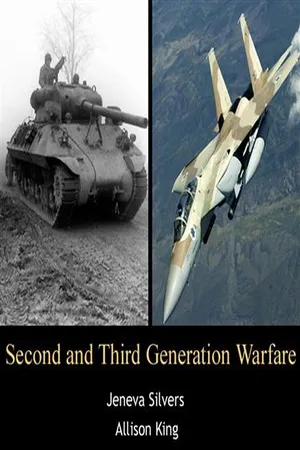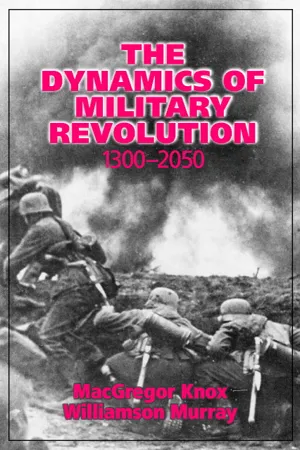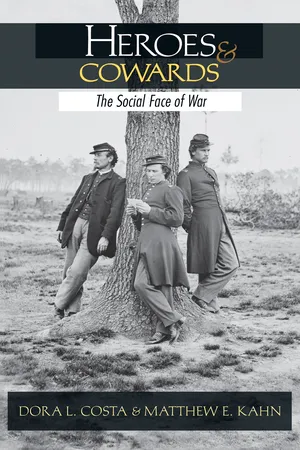History
Advantages of North and South in Civil War
The North had advantages in terms of population, industry, and transportation, which allowed them to produce more resources and sustain a longer war effort. The South, on the other hand, had advantages in terms of military leadership and familiarity with the terrain, which initially gave them an edge in battle. These advantages played a significant role in shaping the outcome of the Civil War.
Written by Perlego with AI-assistance
Related key terms
1 of 5
5 Key excerpts on "Advantages of North and South in Civil War"
- No longer available |Learn more
- (Author)
- 2014(Publication Date)
- College Publishing House(Publisher)
On the other hand, James McPherson has argued that the North’s advantage in population and resources made Northern victory likely, but not inevitable. Confederates did not need to invade and hold enemy territory to win, but only needed to fight a defensive war to convince the North that the cost of winning was too high. The North needed to conquer and hold vast stretches of enemy territory and defeat Confederate armies to win. Also important were Lincoln's eloquence in rationalizing the national purpose and his skill in keeping the border states committed to the Union cause. Although Lincoln's approach to emancipation was slow, the Emancipation Proclamation was an effective use of the President's war powers. The Confederate government failed in its attempt to get Europe involved in the war militarily, particularly the United Kingdom and France. Southern leaders needed to get European powers to help break up the blockade the Union had created around the Southern ports and cities. Lincoln's naval blockade was 95% effective at stopping trade goods; as a result, imports and exports to the South declined significantly. The abundance of European cotton and the United Kingdom's hostility to the institution of slavery, along with Lincoln's Atlantic and Gulf of Mexico naval blockades, severely decreased any chance that either the United Kingdom or France would enter the war. The more industrialized economy of the North aided in the production of arms, munitions and supplies, as well as finances and transportation. The table shows the relative advantage of the Union over the Confederate States of America (CSA) at the start of the war. The advantages widened rapidly during the war, as the Northern economy grew, and Confederate territory shrank and its economy weakened. The Union population was 22 million and the South 9 million in 1861. - MacGregor Knox, Williamson Murray(Authors)
- 2001(Publication Date)
- Cambridge University Press(Publisher)
In i860 the North had over 110,000 manufacturing establishments, the South 18,000. The North produced 94 percent of the country's iron, 97 percent of its coal, and 97 percent of its firearms. It owned 90 percent of the country's merchant ship tonnage and contained 22,000 miles of rail- road, compared with the South's 9,280 miles. The North outperformed the South agriculturally as well, accounting for 75 percent of the country's farm acreage, 60 percent of its livestock, 67 percent of its corn, and 81 percent of its wheat. All in all, the North held 75 percent of the nation's taxable wealth. 2,8 These were important advantages, but they were also latent ones that did not translate directly into military power. "The spreading factories and the burdened busy trains and the limitless fields of wheat," observed historian Bruce Catton, "were not going to appear on the firing line, and it was on the firing line that this [war] must finally be settled." Catton went on to write that the war was ultimately won by "thousands of obscure young men in dirty, sweat-stained uniforms." 19 Fair enough. But the glamourless truth is that it also took the efforts of well-fed, splendidly manicured politicos, lawyers, financiers, industrialists, and contractors to harness those fac- tories, trains, and wheatfields smoothly to the war effort, and not infre- quently to make piles of money for themselves. 28 These and other statistics are conveniently available in E. B. Long, The Civil "War Day By Day: An Almanac, 1861-1865 (Garden City, NY, 1971), pp. 711-6. 29 Catton, Glory Road, p. 242. The U.S. Civil War 85 Antebellum America had a strongly established tradition of low taxes. Aside from a few excise duties on alcohol, tobacco, and a handful of similar items, the population had been free of direct Federal taxation for over forty years.- eBook - PDF
Writing the Civil War
The Quest to Understand
- James M. McPherson, William J. Cooper, James M. McPherson, William J. Cooper, Jr.(Authors)
- 2021(Publication Date)
- University of South Carolina Press(Publisher)
Yes the battles determined the result, the laws unleashed or withheld resources, presi-dents and generals made decisions that set armies in motion, and the soldiers became casualties or heroes for their triumphs or their endurance. And all WHAT DID THE WINNERS WIN? these things matter, but we cannot assess whether this vast expenditure of life and resource was worth it after all unless we know what kind of soci-ety and economy the war created and what kind of lives were led after the killing stopped. We have been getting some answers. There has been productive work describing the impact of the war on women and on African Americans. The South has attracted a range of fruitful research. Yet the North as a society remains a relatively unexplored land. Seventy-eight years passed between the first and the second single-volume study of northern society and its economy at war. Studies of the northern economy have been sub-sumed in a debate over the magnitude and speed of that economy's wartime growth, while studies of northern society have been very few indeed. We have glimpses into the nature, the worth, and the costliness of wartime changes, but there are miles to go in this inquiry. The economic history of the North in the war era has had some seri-ous study. The controlling paradigm of this study has been that of the Second American Revolution. Essentially the foundation for this para-digm was the publication in 1927 of Charles A. Beard and Mary R. Beard's The Rise of American Civilization . The Civil War, the Beards wrote, was a social war, ending in the unquestioned establishment of a new power in the government, making vast changes in the arrangement of classes, in the accumulation and distribution of wealth, in the course of industrial devel-opment .... [The war was a] social cataclysm in which the capitalists, laborers and farmers of the North and West drove from power in the national government the planting aristocracy of the South. - eBook - ePub
The Ephemeral Civilization
Exploding the Myth of Social Evolution
- Graeme Snooks(Author)
- 2002(Publication Date)
- Routledge(Publisher)
The reason the North went to war against the South was not to free the slaves, but to prevent the fragmentation of the North American market by the creation of a new nation, the Confederacy, in the South. By breaking away from the Union, the South might provide an example, together with financial and military support, for the central territories and for the Far West to do the same. Like the South these new nations could have pursued a dependent strategy by developing staples, such as wool, wheat, meat, and minerals, that could be exported to Europe. If the USA was transformed into a multitude of nation-states as in Europe, the technological strategy of the North would collapse. To prevent this the North was prepared to pay whatever it might cost.And the cost was high. In four years of bitter warfare much infrastructure together with the lives of more than 600,000 men were destroyed (Engerman 1966). This amounted to the staggering proportion of about one-quarter of young men eligible for military service. Had the war been fought over any issue other than control of the dynamic strategy of North America these high costs would have quickly led to a negotiated peace. Following its expensive victory, the North imposed its dynamic strategy on the South – with the dramatic consequences feared by the seceding states – and attained its vision of a mega-state in North America. No one would ever challenge the technological strategists again. And, just as the Northern strategists had hoped, there were immense riches to be garnered. This can be seen reflected in the great mansions they built in New York over the following generation (Hughes 1997). The Civil War had achieved its objectives.While the American Civil War can be explained by my dynamic-strategy model, it provides a stumbling block for other mega-theories. It is, therefore, a litmus test for dynamic models of human society. How, one might ask, would Marx explain it? It is quite clear that the Civil War was not a struggle between classes – both societies were dominated by prosperous elites who invested in ‘capitalist’ enterprises – but, rather, a struggle between supporters of different dynamic strategies. Nor was it a struggle between the forces of good and evil as implied by those, like Robert Fogel, who argue that it was a conflict over the moral issue of slavery. Robert Fogel (1989), joint Nobel Laureate with Douglass North, is the best-known exponent of the popular argument that the Civil War was fought over the ‘moral’ issue of slavery. His recent discussion of this issue is surprising because, in contrast to his earlier work (Fogel and Engerman 1974), he employs an ethical rather than an economic argument. This approach, which in my opinion leads him into error, is the outcome of not employing a dynamic framework for his static neoclassical approach to slavery. Moral arguments are employed to fill the void left by deficiencies in the neoclassical approach to history. - eBook - PDF
Heroes and Cowards
The Social Face of War
- Dora L. Costa, Matthew E. Kahn(Authors)
- 2010(Publication Date)
- Princeton University Press(Publisher)
The other side seceded over the Republican Party’s promise to exclude slavery from the territories, a policy that would make “property in slaves so insecure as to be comparatively worthless” ( Jef-ferson Davis in 1861), 3 and established a nation based “upon the great truth that the negro is not equal to the white man; that slavery, subordination to the superior race, is his natural and normal condition” (Alexander H. Stephens, vice president of the Confederacy). 4 It memo-rialized the conflict as the “War of Northern Aggression” against “the inalienable right of a people to change their government” ( Jefferson Davis in 1881). 5 While we think of the Civil War as a struggle between North and South, it also divided the North along re-gional, economic, and religious lines. It pitted slavehold-ers in the border states against free farmers in New Eng-land and the Midwest. It led to talks of secession in western states tied to the South through trade along the Missis-sippi. It set immigrants in large cities against small-town WHY THE U.S. CIVIL WAR? 27 native-born artisans. Evangelical Protestants rallied to the abolitionist cause, but Anglicans, Lutherans, and Catho-lics did not. The Civil War marked the emergence of the United States as an industrial nation, divided between North and South. Northern soldiers grew up in a nation of small farmers and artisans and became old in a land of large in-dustrial enterprises worked by immigrant labor. Southern soldiers left a land of small farmers and large, stately plan-tations worked by slaves and returned to a region of poor sharecroppers. The Civil War was also a political water-shed. The black freedmen of the North became citizens; southern slaves won their freedom and, for a brief time, political rights in the postwar South. This book is set during the Civil War but, unlike most Civil War books, it is not about its politics, its battles, and its famous men.
Index pages curate the most relevant extracts from our library of academic textbooks. They’ve been created using an in-house natural language model (NLM), each adding context and meaning to key research topics.




